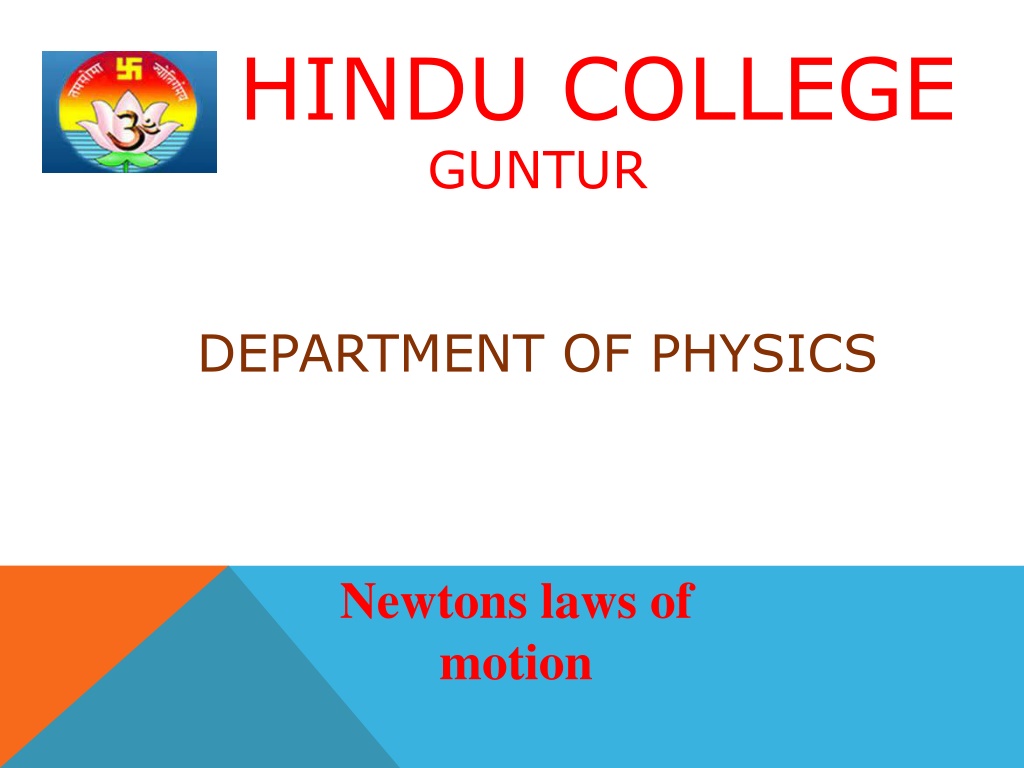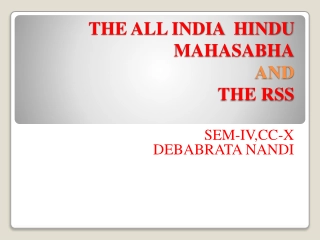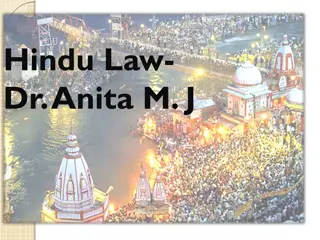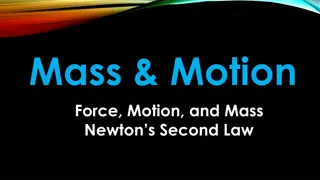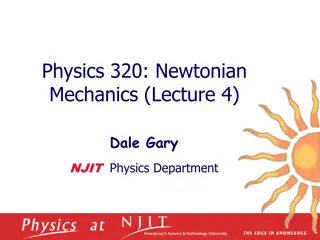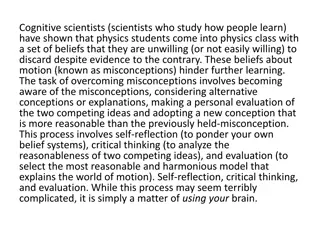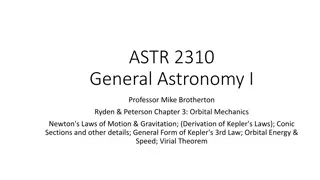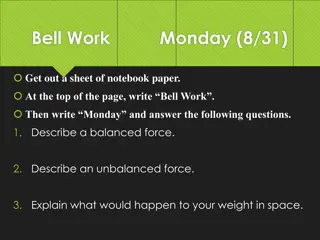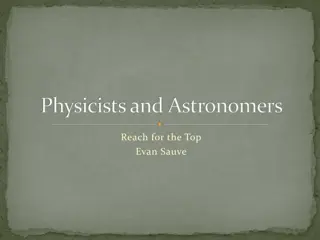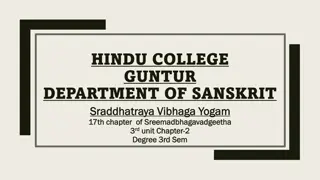Understanding Newton's Laws of Motion at Hindu College Guntur
Exploring Newton's Laws of Motion, including the first law of inertia, the second law relating force, mass, and acceleration, and the implications of these laws on objects in motion. Discover how these fundamental principles play out in everyday scenarios and their importance in the study of physics.
Uploaded on Oct 05, 2024 | 0 Views
Download Presentation

Please find below an Image/Link to download the presentation.
The content on the website is provided AS IS for your information and personal use only. It may not be sold, licensed, or shared on other websites without obtaining consent from the author. Download presentation by click this link. If you encounter any issues during the download, it is possible that the publisher has removed the file from their server.
E N D
Presentation Transcript
HINDU COLLEGE GUNTUR DEPARTMENT OF PHYSICS Newtons laws of motion
While most people know what Newton's laws say, many people do not know what they mean (or simply do not believe what they mean).
Newtons Laws of Motion 1st Law An object at rest will stay at rest, and an object in motion will stay in motion at constant velocity, unless acted upon by an unbalanced force. 2nd Law Force equals mass times acceleration. 3rd Law For every action there is an equal and opposite reaction.
1st Law of Motion (Law of Inertia) An object at rest will stay at rest, and an object in motion will stay in motion at constant velocity, unless acted unbalanced force. upon by an
1 1st st Law Law Inertia is the tendency of an object to resist changes in its velocity: whether in motion or motionless. These pumpkins will not move unless acted on by an unbalanced force.
2 2nd nd Law Law The net force of an object is equal to the product of its mass and acceleration, or F=ma.
2nd Law When mass is in kilograms and acceleration is in m/s/s, the unit of force is in newtons (N). One newton is equal to the force required to kilogram of meter/second/second. accelerate mass one one at
2nd Law (F = m x a) How much force is needed to accelerate a 1400 kilogram car 2 meters per second/per second? Write the formula F = m x a Fill in given numbers and units F = 1400 kg x 2 meters per second/second Solve for the unknown 2800 kg-meters/second/second or2800 N N 2800
If mass remains constant, doubling the acceleration, doubles the force. If forces constant, doubling the mass, halves the acceleration
NEWTONS 2ND LAWPROVES THAT DIFFERENT MASSES ACCELERATE TO THE EARTH AT THE SAME RATE, BUT WITH DIFFERENT FORCES. We know that objects with different masses accelerate to the ground at the same rate. However, because of the 2nd Law we know that they don t hit the ground with the same force. F = ma F = ma F = ma F = ma 98 N = 10 kg x 9.8 m/s/s 98 N = 10 kg x 9.8 m/s/s 9.8 N = 1 kg x 9.8 9.8 N = 1 kg x 9.8 m/s/s m/s/s
3 3rd rd Law Law For every action, there is an equal and opposite reaction.
3 3rd rd Law Law According to Newton, whenever objects A and B interact with each other, they exert forces upon each other. When you sit in your chair, your body exerts a downward force on the chair and the chair exerts an upward force on your body.
3 3rd rd Law Law Flying gracefully through the air, birds depend on Newton s third law of motion. As the birds push down on the air with their wings, the air pushes their wings up and gives them lift.
Consider the flying motion of birds. A bird flies by use of its wings. The wings of a bird push air downwards. In turn, the air reacts by pushing the bird upwards. The size of the force on the air equals the size of the force on the bird; the direction of the force on the air (downwards) is opposite the direction of the force on the bird (upwards). Action-reaction force pairs make it possible for birds to fly.
3rd Law The reaction of a rocket is an application of the third law of motion. Various fuels are burned in the engine, producing hot gases. The hot gases push against the inside tube of the rocket and escape out the bottom of the tube. As the gases move downward, the rocket moves in the opposite direction.
Thank you Thank you
